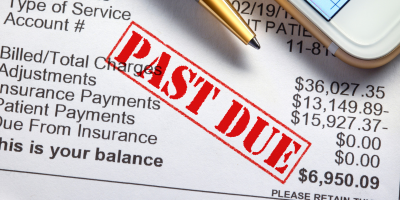Budgeting for a family is hard. Every month brings with it additional expenses that are often forgotten about from year to year, or simply just unpredictable. Without fail, we will be on our way to having a successful month of budgeting and a child will outgrow their shoes, or the cat will need a vet visit, or one of the cars will have a tire blowout.
It’s just life – but there are ways to prepare and maintain a budget that meets most, if not all, of your family needs – even during the unexpected.
Tip: Struggling with how to put a budget together? Check out this post for more information.
Our Budgeting Goals
This year, in combination with our resolutions, we are taking budgeting seriously, discussing our goals with others who are holding us accountable, and sharing it with you. Our goal is to be completely free of debt, including student loan debt, by the time we turn 40. It shouldn’t be a problem if we actually keep to our budget and I thought I would share the start of our process with you.
Our favorite resource to use to track our budget is the Blessed Budget Planner, although we’ve successfully used other methods in the past. This time, we’ve taken a detailed look at our expenses and ways that we can and should make adjustments in order to pay off our debt and feel more financially secure. It won’t happen without at least a little sacrifice.
Realizing that we have failed before, I knew that if we weren’t thorough in our plan, it wouldn’t work. So we began budgeting everything.
Everything.
Plan For Everything
I thought about each expense we have over the course of the year, including:
- Kid’s clothing needs
- Back to school supplies
- Car Registrations
- Oil changes
- Twice yearly water bills
- Birthdays
- Christmas
- Miscellaneous medical bills
I added each as a line item to our budget. For example, if I knew that I needed $40 dollars yearly for back-to-school supplies, then I budgeted ($40 ÷ 12 = 3.33) a total of 3.33 per month.
One of my favorite parts of the Blessed Budget Planner is the ability to set up funds. Each “fund” acts like an ongoing envelope (if you have used the cash system in the past) that you put money in and allow it to carry over from month to month, or until you have an expense that qualifies to come out of it. With my back-to-school fund, that money will collect every month and, in August, when I need school supplies, I won’t have to worry about where the additional money is going to come from. It will already be there, stress-free.
Another cool way we’ve used the “funds” section is for household maintenance items such as replacing our deck outside, painting the interior of the house, and as a buffer for any plumbing, electrical, or other household needs that might arise over the course of the year. I lumped all of the money for this into one category, but you could definitely create individual “funds” for each item.
Managing debt is very similar. You start by entering each debt you have and how much you owe on it. Then you add how much you are budgeting to pay each month. Pretty simple.
Tracking Transactions
You can manage your transactions in several different ways, but my favorite method is using the cash envelope system. I only use cash for those items that change throughout the month, such as our grocery bills and household expenses. For the rest, I simply track those stable expenses (water bill, etc.) that don’t change from month to month within my planner.
My suggestion is to check your bank account statements going back for a couple of months and make sure you really are tracking each and every subscription expense you might have.
Of course, the Blessed Budget Planner isn’t the only budgeting tool out there. I’ve checked out EveryDollar, youneedabudget, mint.com, and GoodBudget, all of which offer similar features in an online format. Take your time and find something that works for your family and is within your budget.
I understand that, like us, debt payoff is a high priority for many, but in order to think about getting debt under control, a budget is necessary. You have to know where your money is going every month in order to make adjustments and divert funds to debt payoff. It’s also critical to have an emergency fund and contingency plan for extra expenses that come up so that you don’t have to resort to additional debt.
Take it from me – finding what works for you and your family is the only way it will continue to work after the novelty has worn off.
Tip: Struggling with how to put a budget together? Check out this post for more information.



